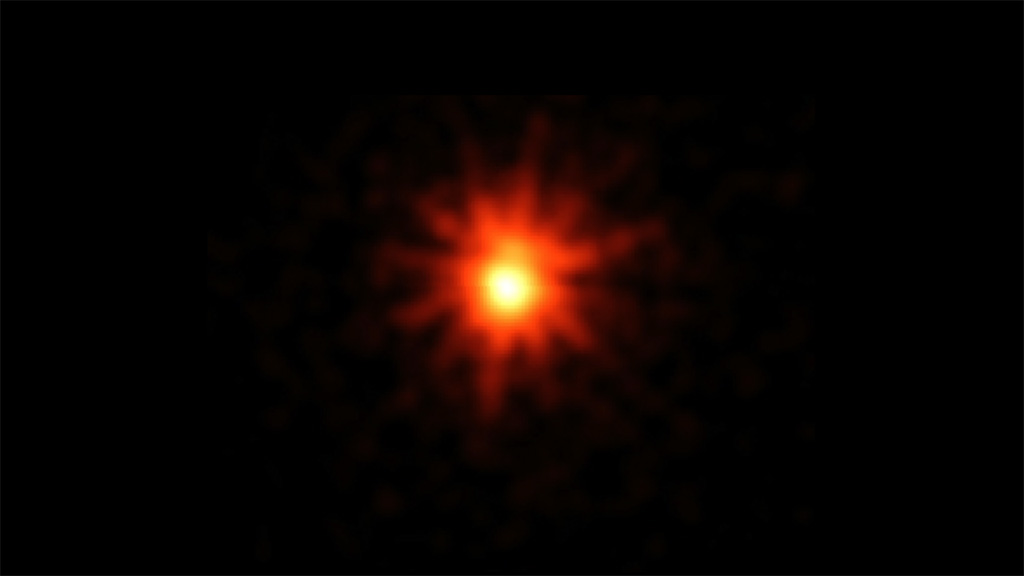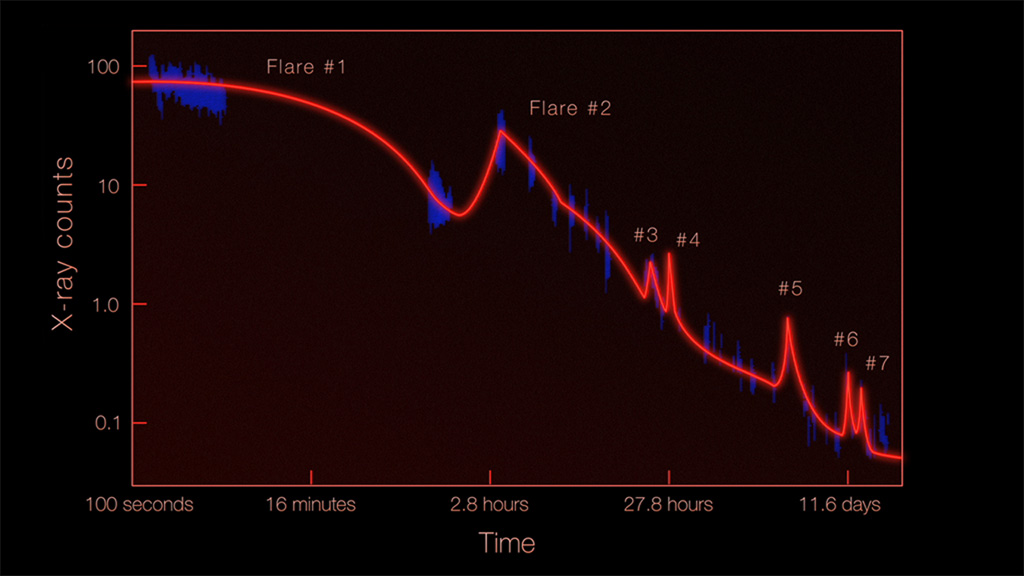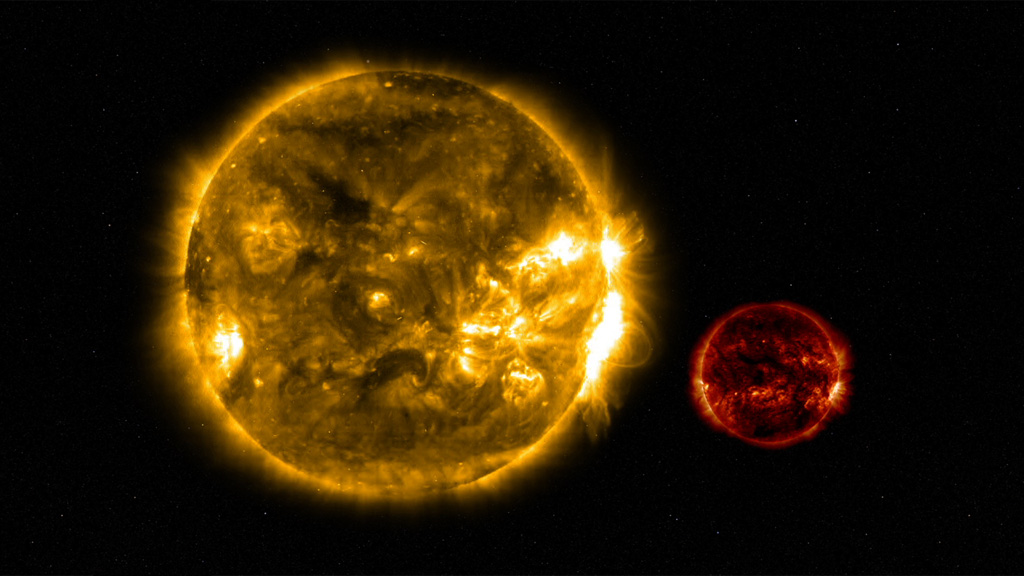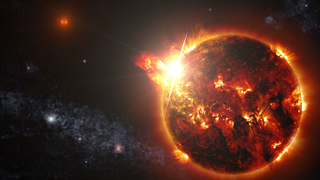Universe
ID: 11672

On April 23, 2014, NASA's Swift satellite detected the strongest, hottest, and longest-lasting sequence of stellar flares ever seen from a nearby red dwarf star. The outbursts came from one of the stars in a close binary system known as DG Canum Venaticorum, or DG CVn for short, located about 60 light-years away. Both stars are dim red dwarfs with masses and sizes about one-third of our sun's. When stellar flares erupt they emit radiation across the electromagnetic spectrum, from radio waves to visible, ultraviolet and X-ray light. At 5:07 p.m. EDT on April 23, the rising tide of X-rays from DG CVn's initial blast triggered Swift’s detector. Scientists found the explosion was as much as 10,000 times more powerful than the largest solar flare ever recorded. Watch the video to learn more.



Superflare




Related Story
For More Information
Story Credits
Lead Visualizer/Animator:
Scott Wiessinger (USRA)
Visualizers/Animators:
Tom Bridgman (Global Science and Technology, Inc.)
Walt Feimer (HTSI)
Video Editor:
Scott Wiessinger (USRA)
Interviewees:
Rachel Osten (STScI)
Stephen Drake (USRA)
Narrator:
Scott Wiessinger (USRA)
Producer:
Scott Wiessinger (USRA)
Project Support:
Aaron E. Lepsch (ADNET Systems, Inc.)
Videographers:
Rob Andreoli (Advocates in Manpower Management, Inc.)
John Caldwell (Advocates in Manpower Management, Inc.)
Lead Writer:
Francis Reddy (Syneren Technologies)
Scott Wiessinger (USRA)
Visualizers/Animators:
Tom Bridgman (Global Science and Technology, Inc.)
Walt Feimer (HTSI)
Video Editor:
Scott Wiessinger (USRA)
Interviewees:
Rachel Osten (STScI)
Stephen Drake (USRA)
Narrator:
Scott Wiessinger (USRA)
Producer:
Scott Wiessinger (USRA)
Project Support:
Aaron E. Lepsch (ADNET Systems, Inc.)
Videographers:
Rob Andreoli (Advocates in Manpower Management, Inc.)
John Caldwell (Advocates in Manpower Management, Inc.)
Lead Writer:
Francis Reddy (Syneren Technologies)
Please give credit for this item to:
NASA's Goddard Space Flight Center
Cover image courtesy of NASA/GSFC/S. Wiessinger
DG CVn X-ray image courtesy of NASA/Swift
NASA's Goddard Space Flight Center
Cover image courtesy of NASA/GSFC/S. Wiessinger
DG CVn X-ray image courtesy of NASA/Swift
Short URL to share this page:
https://svs.gsfc.nasa.gov/11672
Keywords:
SVS >> Astrophysics
SVS >> App
NASA Science >> Universe
https://svs.gsfc.nasa.gov/11672
Keywords:
SVS >> Astrophysics
SVS >> App
NASA Science >> Universe








